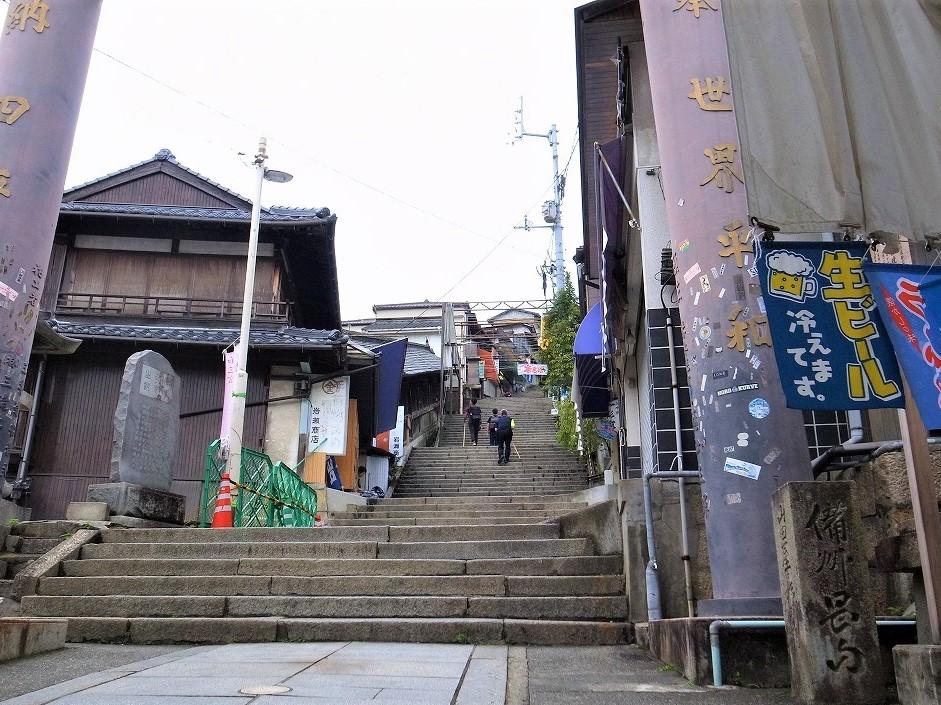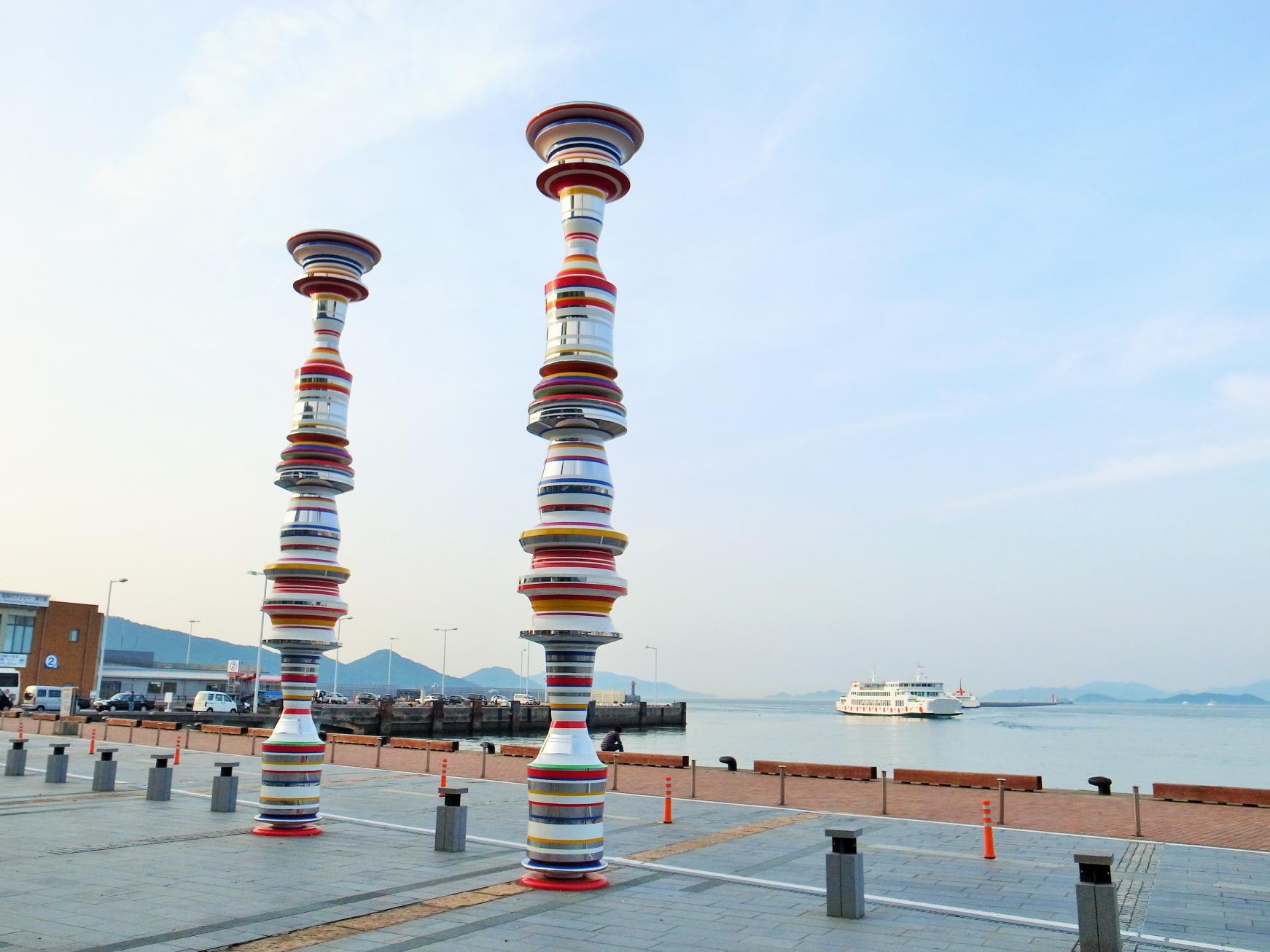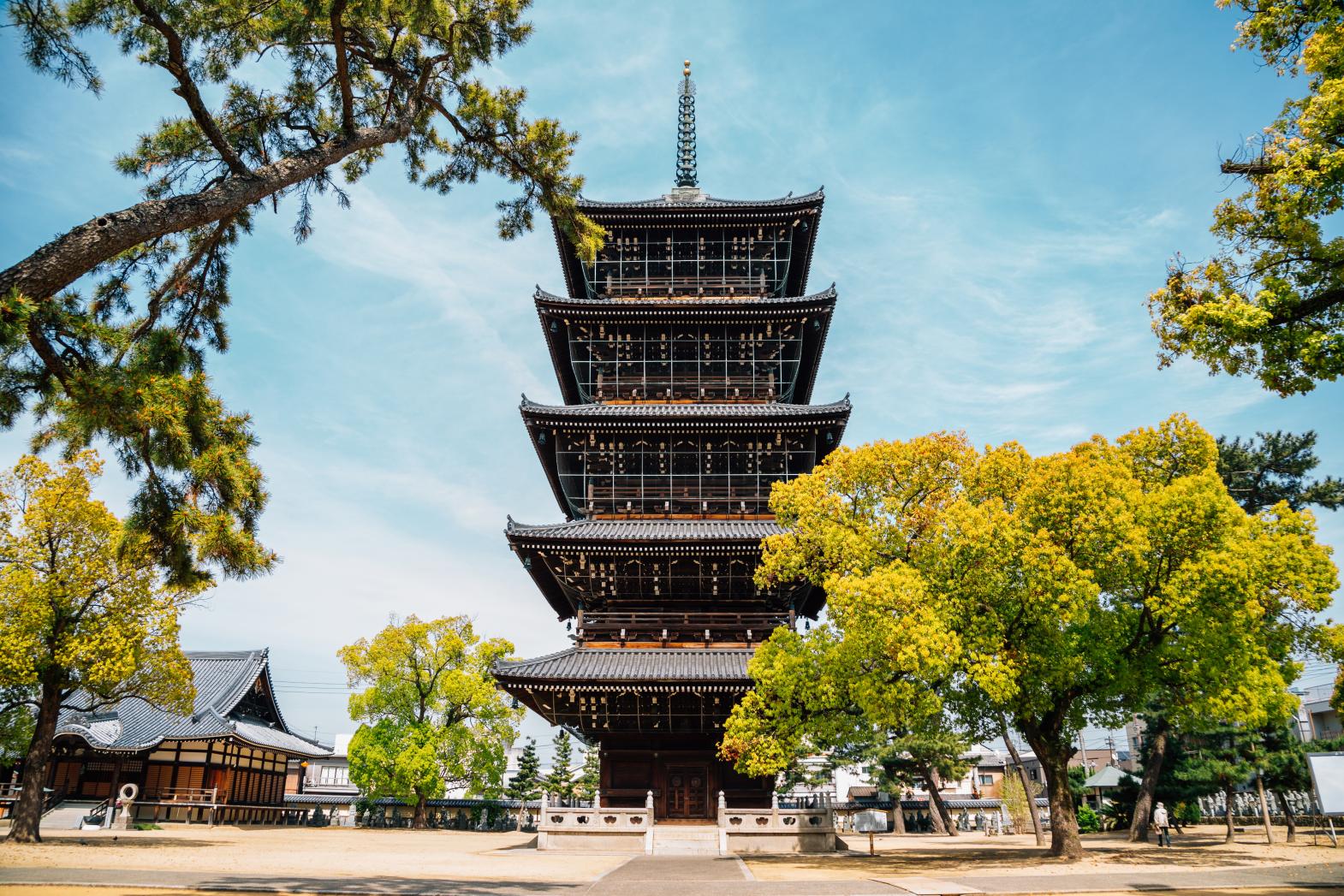Three-day course covering the best of Kagawa

Kagawa: where traditional and modern meet.
On this three-day course, experience Kagawa's biggest city of Takamatsu, explore the art island Naoshima, and visit a nationally-revered shrine at Kotohira.
Kagawa may be Japan's smallest prefecture, but it packs quite the punch!
START
Ritsurin Garden
A beautiful change of scenery with every step

Day 1: explore the best of traditional and modern highlights that come together in Kagawa Prefecture. Start with Ritsurin Garden, a national treasure that took a century to build.
Enjoy the changing seasons among perfectly-balanced nature and architecture in the spacious grounds, as you wander between the garden's two halves: a Japanese-style southern half, and a western-influenced Meiji style (1868-1912) northen half. Thousands of pine trees, flat-bottomed Japanese boats, the graceful teahouse Kikugetsu-tei, and other sights await you here. The garden opens at sunrise, so you can put your morning hours to good use.
(Estimated time: 1.5 hours~)
10 min. by rental bicycle
Wasanbon Confectionary Making at "Mamehana"

Try your hand at making traditional confectionary from wasanbon sugar, a high-grade sugar produced only here and in neighboring Tokushima Prefecture. The wooden molds used in the activity were made by none other than Ichihara Yoshihiro, recognized as a Contemporary Master Craftsman by the Japanese government. His daughter opened this workshop, Mamehana.
Each sweet, created with the wooden molds, is an edible work of art. You can even take the sweets home for a delicious souvenir! Stop by Ichihara's workshop nearby as well.
(Estimated time: 1 hour)
Takamatsu Shopping Arcades
Largest shopping arcade network in Japan

Enjoy walking around the longest network of covered shopping streets in all of Japan!
20 min. by tour bus from JR Takamatsu Station
Mt. Yashima Night Tour
The best night view in all Shikoku

The lava tabletop mountain, Mt. Yashima, offers the best sunsets and night views in the prefecture. Here you can take in the city of Takamatsu and the islands dotting the Seto Inland Sea. We recommend joining a night tour during the evening, when the usual bus from the nearest station to the summit is no longer running. If you visit in the daytime, stop by Shikoku Mura (Shikoku Folk House Museum) or Yashimaji Temple.
50 min. by ferry from Takamatsu Port
Naoshima Island
A sanctuary for contemporary art

Day 2: visit Naoshima Island, the contemporary art mecca that brings people from around the world. Yayoi Kusama's iconic red pumpkin awaits you at the port. Rent a bicycle when the weather is nice, and explore what the island has to offer: the Benesse House Museum, Chichu Art Museum, art house projects, and more. Before visiting, check the Benesse Art Site webpage for what days and times the art museums are open.
(Estimated time: 1 day)
Reservations: setouchitour@koebi.jp
“Red Pumpkin” ©Yayoi Kusama,2006 Naoshima Miyanoura Port Square
1 hour by JR or Kotoden train from Takamatsu
Kotohiragu Shrine
Shikoku's most famous shrine

Day 3: the one and only Kotohiragu Shrine. In the Edo period (1603-1867) when travel was prohibited, commoners were allowed a visit here for the "journey of a lifetime." Even dog-owners could let their pet make a trip to the top for them. The 785 stone steps to the main shrine halfway up the mountain, or the 1,368 to the inner shrine, make Kotohiragu famous. As you walk through, take in the calm and still atmosphere of the shrine. A special good-luck charm, or omamori, that is the gold color of ripe wheat and rice awaits those who make it to the top.
10 min. walk
Konpira Grand Theater (Kanamaruza)
A theater that brings the past to life

Tour Japan's oldest extant theater building, constructed in 1835, whose interior retains the look of the Edo period (1603-1868). Kabuki performances are held once a year in spring.
※Closed Oct. 1, 2020 to March 18, 2022 (tentative) for seismic retrofitting.
On foot
Shrine Road

After a visit to the shrine, enjoy a walk through the town at the foot of the mountain. Buy some local sake at the Kinryo Sake Museum, or try making Kagawa's famous udon noodles at the Nakano Udon School. Stop by the shop Yoshinoya, which sells cloth bags made from traditional and colorful nobori-hata flags, used to advertise kabuki performances.
END
Google Map may not be displayed properly if the maximum daily data usage is reached.




